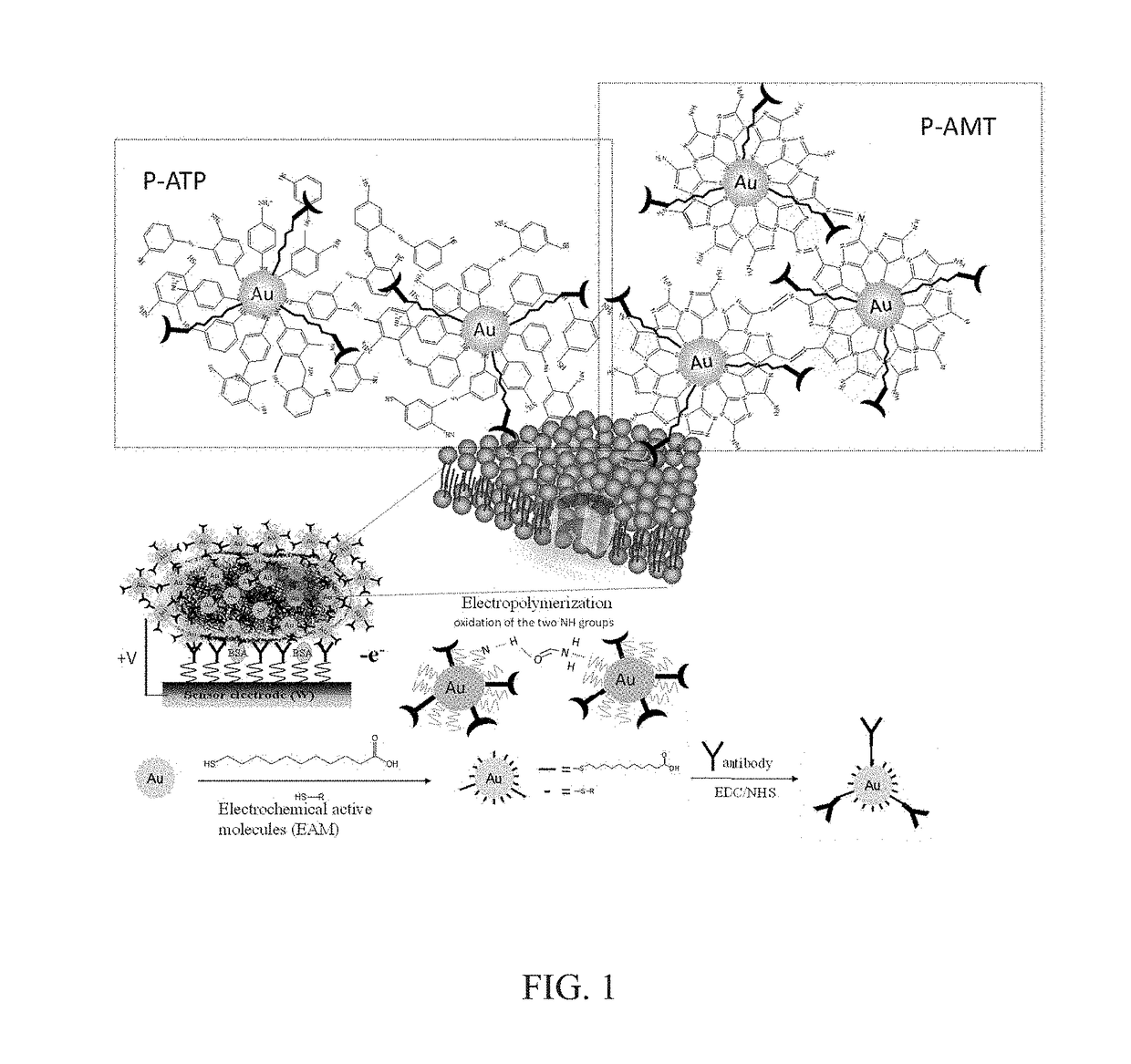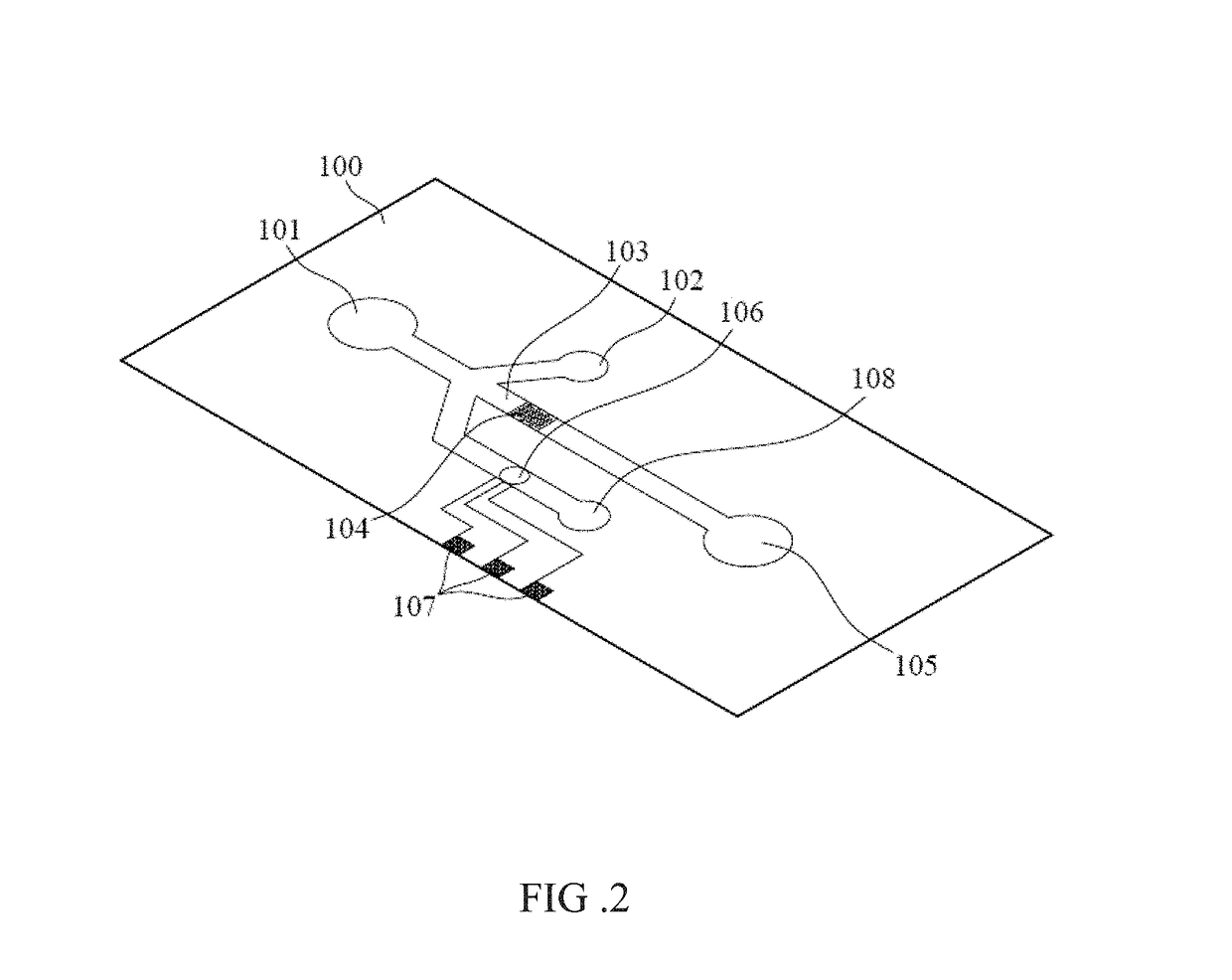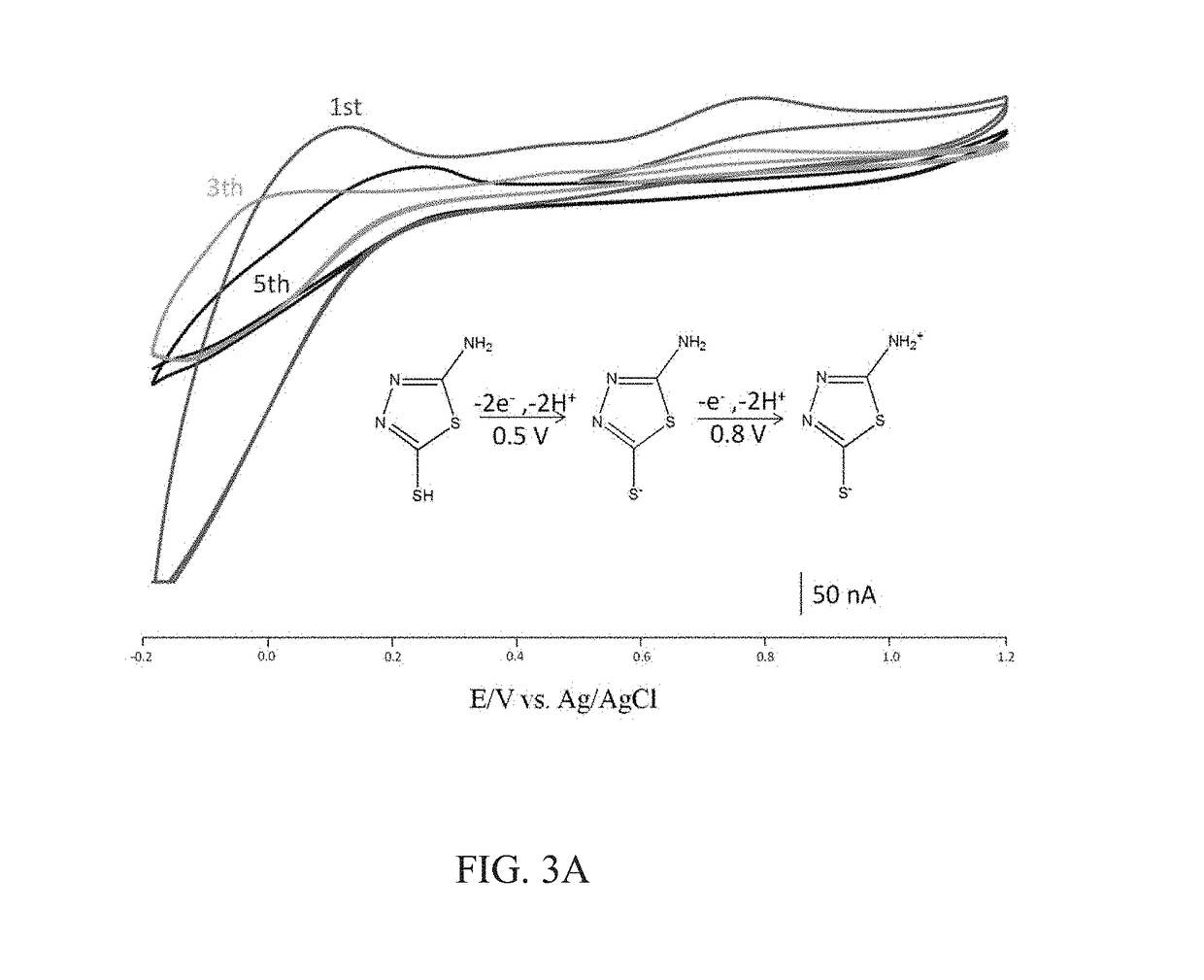Method of performing electropolymerized electrochemically active poly-films as current signal to detect bacteremia
a technology of electrochemical activity and current signal, which is applied in the field of detection of bacteria, can solve the problems of bacterial infection still a threat to human health, bacteremia in the human circulatory system, and often has serious consequences, so as to reduce detection costs and facilitate operation.
- Summary
- Abstract
- Description
- Claims
- Application Information
AI Technical Summary
Benefits of technology
Problems solved by technology
Method used
Image
Examples
example 1
Experimental Section
1.1 Chemicals and Cell Culture
[0029]All reagents used in the present invention are of analytical grade and the solutions are prepared using deionized water. Prior to each experiment, all solutions are filtered using 0.22 μm syringe filters (Whatman, NJ, USA). In one embodiment, the electrochemical redox-active molecular monomer is, for example but not limited to, 5-amino-2-mercapto-1,3,4-thiadiazole (AMT) or 4-aminothiophenol (4-ATP), which are purchased from Sigma-Aldrich (MO, USA).
[0030]In the present invention, 10 mM 4-(2-hydroxyethyl)-piperazine-1-ethanesulphonic acid (HEPES, Sigma, MO, USA) is prepared as a running buffer and adjusted to pH 7.5 using 0.1 N NaOH.
[0031]In one embodiment of the present invention can simultaneously detect two pathogenic, for example but not limited to, Staphylococcus aureus (SA) and Pseudomonas aeruginosa (PA), which are obtained from Bioresource Collection and Research Center (BCRC), Taiwan. The bacteria are grown in a culturin...
example 2
Characteristics of the Electrochemical Redox-Active Molecular Monomer in the Modified Gold Nanoparticles (RA-GNP-Ab)
[0037]In the method of the present invention, the electropolymerized electrochemically active poly-film is formed by the covalent bonds between thiol group of the electrochemical redox-active molecular monomer, 5-amino-2-mercapto-1,3,4-thiadiazole (AMT) or 4-aminothiophenol (4-ATP) and gold nanoparticles (GNPs). The electrochemical properties of this monolayer are investigated using continuous cyclic voltammetry (CV) (5 cycles). FIG. 3A presents a cyclic voltammogram (CV) of the modified gold nanoparticles with AMT electropolymerized on the surface of ITO electrodes. The two cation radicals on the AMT are coupled to form a dimer via a hydrazone-bond after a voltage is applied. The oxidation of the two NH groups on the AMT leads to the formation of dimer species on the surface of the electrode. The oxidation of SH occurs in the voltage between 0.2 V and 0.6 V; therefore...
example 3
Specificity of the Method of the Present Invention
[0040]The specificity of the method of the present invention is evaluated by exposing the antibody-immobilized multi-array electrodes to Staphylococcus aureus (SA) and Pseudomonas aeruginosa (PA) under the following conditions: (I) a mixture solution of the modified gold nanoparticles (RA-GNPs-Ab) (103-4 particles / μL) and bacteria (SA or PA); (II) pure bacteria without RA-GNPs-Ab; and (III) control group: only RA-GNPs-Ab. The bacteria sample is diluted to 10 cells / mL using 100 mM HEPES and 20 mM phosphate buffer. All of the CVs are detected for a potential range from −0.2 to +1.2 V vs. counter / reference electrode. All measurements are obtained at a scanning rate of 100 mV / s (total test volume is 100 μL). FIG. 4A shows the result of Staphylococcus aureus (SA), and FIG. 4B shows the result of Pseudomonas aeruginosa (PA). The cyclic voltammograms (CV) illustrates the signal enhancement under three conditions detected by the method of th...
PUM
| Property | Measurement | Unit |
|---|---|---|
| volume | aaaaa | aaaaa |
| volume | aaaaa | aaaaa |
| volume | aaaaa | aaaaa |
Abstract
Description
Claims
Application Information
 Login to View More
Login to View More - R&D
- Intellectual Property
- Life Sciences
- Materials
- Tech Scout
- Unparalleled Data Quality
- Higher Quality Content
- 60% Fewer Hallucinations
Browse by: Latest US Patents, China's latest patents, Technical Efficacy Thesaurus, Application Domain, Technology Topic, Popular Technical Reports.
© 2025 PatSnap. All rights reserved.Legal|Privacy policy|Modern Slavery Act Transparency Statement|Sitemap|About US| Contact US: help@patsnap.com



